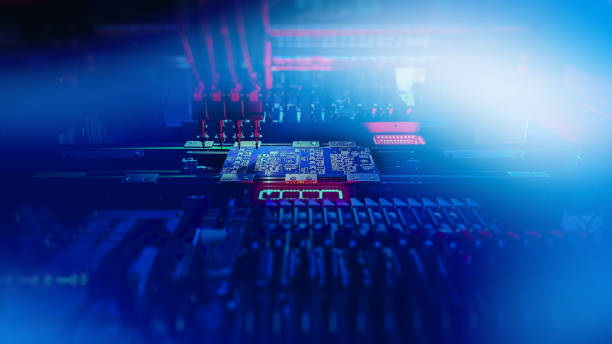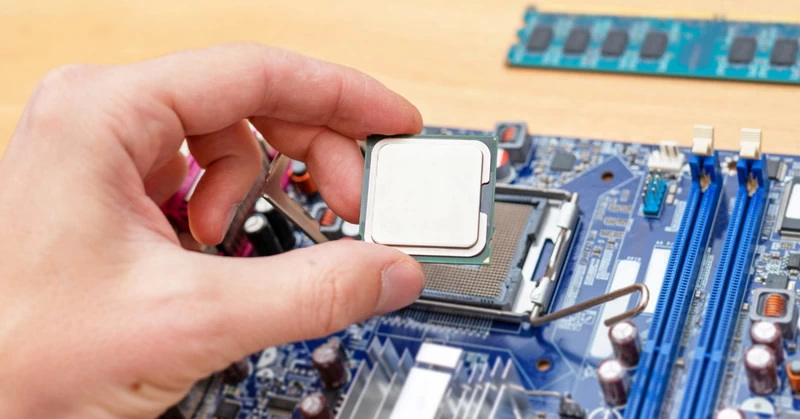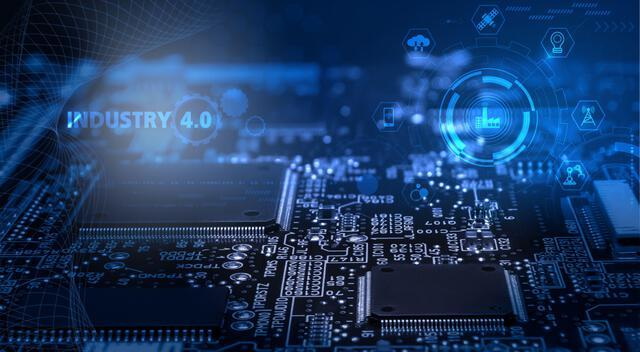Content Menu
● Understanding SMT Components
>> Passive Components
>> Active Components
● Common SMT Components and Their Functions
>> 1. Resistors
>> 2. Capacitors
>> 3. Inductors
>> 4. Diodes
>> 5. Transistors
>> 6. Integrated Circuits (ICs)
● Advantages of SMT Components
● Challenges in Using SMT Components
● Future Trends in SMT Technology
● Conclusion
● FAQ
>> 1. What are the most common SMT components?
>> 2. How do SMT components differ from through-hole components?
>> 3. What are the advantages of using SMT components?
>> 4. What challenges are associated with SMT components?
>> 5. How are SMT components assembled onto PCBs?
Surface Mount Technology (SMT) has revolutionized the electronics manufacturing industry by allowing components to be mounted directly onto the surface of printed circuit boards (PCBs). This method contrasts with traditional through-hole technology, where components are inserted into holes drilled in the PCB. SMT components are smaller, lighter, and more efficient, making them ideal for modern electronic devices. In this article, we will explore various SMT components, their functions, and their significance in electronic design and manufacturing.
Understanding SMT Components
SMT components are categorized into two main types: passive components and active components. Each type serves a unique purpose in electronic circuits.

Passive Components
Passive components do not require an external power source to operate. They include:
- Resistors: These components limit the flow of electric current in a circuit. They are essential for controlling voltage and current levels, ensuring that other components function correctly. Resistors come in various types, including fixed, variable, and specialty resistors, each serving different applications.
- Capacitors: Capacitors store and release electrical energy. They are used in filtering applications, energy storage, and timing circuits. Different types of capacitors, such as ceramic, electrolytic, and tantalum, have unique characteristics that make them suitable for specific applications.
- Inductors: Inductors store energy in a magnetic field when electrical current passes through them. They are commonly used in power supply circuits and filters. SMT inductors are designed to handle high frequencies and are often used in RF applications.
Active Components
Active components require an external power source to operate and can amplify or switch electronic signals. They include:
- Diodes: Diodes allow current to flow in one direction only, making them crucial for rectification in power supplies. They come in various types, including standard, Schottky, and Zener diodes, each serving different functions in electronic circuits.
- Transistors: Transistors act as switches or amplifiers in circuits. They are fundamental in digital circuits and signal processing. There are several types of transistors, including bipolar junction transistors (BJTs) and field-effect transistors (FETs), each with unique characteristics and applications.
- Integrated Circuits (ICs): ICs are complex assemblies of multiple components (resistors, capacitors, transistors) on a single chip. They perform various functions, from simple logic operations to complex processing tasks. ICs are the backbone of modern electronics, enabling compact and efficient designs.
Common SMT Components and Their Functions
1. Resistors
Resistors are one of the most common SMT components. They are used to control current flow and divide voltages in circuits. SMT resistors come in various sizes and values, allowing designers to choose the appropriate type for their applications. For example, precision resistors are used in applications requiring high accuracy, while power resistors are designed to handle higher power levels.
2. Capacitors
Capacitors in SMT form are used for energy storage, filtering, and timing applications. They can be ceramic, tantalum, or electrolytic, each type offering different characteristics suitable for specific applications. For instance, ceramic capacitors are often used in high-frequency applications due to their low equivalent series resistance (ESR), while tantalum capacitors are preferred for their stability and reliability in power supply circuits.
3. Inductors
Inductors are less common than resistors and capacitors but are essential in power supply circuits and RF applications. SMT inductors are compact and can handle high frequencies, making them suitable for modern electronic devices. They are used in applications such as filtering, energy storage, and signal coupling.
4. Diodes
SMT diodes are used for rectification, voltage regulation, and signal demodulation. They are critical in power supply circuits, ensuring that current flows in the correct direction. Schottky diodes, for example, are known for their low forward voltage drop and fast switching speed, making them ideal for high-frequency applications.
5. Transistors
Transistors are vital for switching and amplification in electronic circuits. SMT transistors are used in various applications, including signal processing, power management, and digital logic circuits. For example, MOSFETs (metal-oxide-semiconductor field-effect transistors) are widely used in power electronics due to their high efficiency and fast switching capabilities.
6. Integrated Circuits (ICs)
ICs are the backbone of modern electronics, integrating multiple functions into a single package. SMT ICs are used in everything from microcontrollers to complex processors, enabling compact and efficient designs. The versatility of ICs allows them to be used in various applications, including consumer electronics, automotive systems, and industrial automation.

Advantages of SMT Components
The adoption of SMT components offers several advantages over traditional through-hole components:
- Space Efficiency: SMT components are smaller and can be placed closer together, allowing for more compact circuit designs. This is particularly important in consumer electronics, where space is often at a premium.
- Weight Reduction: The lighter weight of SMT components contributes to the overall reduction in the weight of electronic devices. This is especially beneficial for portable devices such as smartphones and laptops.
- Improved Performance: SMT components can operate at higher frequencies and have better electrical performance due to shorter interconnections. This leads to faster signal transmission and improved overall circuit performance.
- Automated Assembly: SMT components can be easily handled by automated assembly machines, increasing production efficiency and reducing labor costs. This automation also allows for higher precision in component placement, leading to improved reliability.
Challenges in Using SMT Components
Despite their advantages, SMT components also present challenges:
- Handling and Placement: SMT components are smaller and more delicate, requiring precise handling and placement during assembly. This necessitates the use of specialized equipment and techniques to ensure accurate placement.
- Repair and Rework: Repairing SMT components can be more challenging than through-hole components due to their size and the complexity of the PCB layout. Specialized tools and techniques are often required for rework, which can increase repair costs.
- Thermal Management: SMT components can generate heat, necessitating effective thermal management solutions to prevent overheating. This is particularly important in high-power applications where heat dissipation is critical.
Future Trends in SMT Technology
As technology continues to evolve, several trends are shaping the future of SMT components:
- Miniaturization: The demand for smaller and more compact electronic devices is driving the development of even smaller SMT components. This trend is leading to innovations in materials and manufacturing processes.
- Increased Integration: The integration of more functions into single ICs is becoming increasingly common. This trend allows for more complex functionalities in smaller packages, further enhancing the capabilities of electronic devices.
- Advanced Materials: The use of advanced materials, such as organic substrates and new conductive materials, is improving the performance and reliability of SMT components. These materials can enhance thermal management and electrical performance.
- Sustainability: There is a growing emphasis on sustainability in electronics manufacturing. This includes the development of environmentally friendly materials and processes, as well as the recycling of SMT components at the end of their life cycle.
Conclusion
In conclusion, SMT components play a crucial role in modern electronics, enabling the design of compact, efficient, and high-performance devices. Understanding the various types of SMT components and their functions is essential for anyone involved in electronics design and manufacturing. As technology continues to evolve, SMT components will remain integral to the development of innovative electronic solutions. The ongoing advancements in SMT technology promise to enhance the capabilities of electronic devices, making them more efficient, reliable, and environmentally friendly.

FAQ
1. What are the most common SMT components?
The most common SMT components include resistors, capacitors, inductors, diodes, transistors, and integrated circuits (ICs).
2. How do SMT components differ from through-hole components?
SMT components are mounted directly on the surface of PCBs, while through-hole components are inserted into drilled holes. SMT components are generally smaller and allow for more compact designs.
3. What are the advantages of using SMT components?
The advantages of SMT components include space efficiency, weight reduction, improved performance, and compatibility with automated assembly processes.
4. What challenges are associated with SMT components?
Challenges include handling and placement precision, repair and rework difficulties, and the need for effective thermal management.
5. How are SMT components assembled onto PCBs?
SMT components are typically assembled using automated pick-and-place machines, which accurately position the components on the PCB before soldering.




















